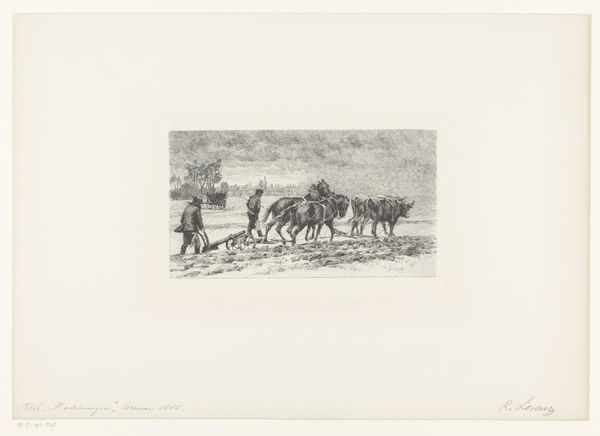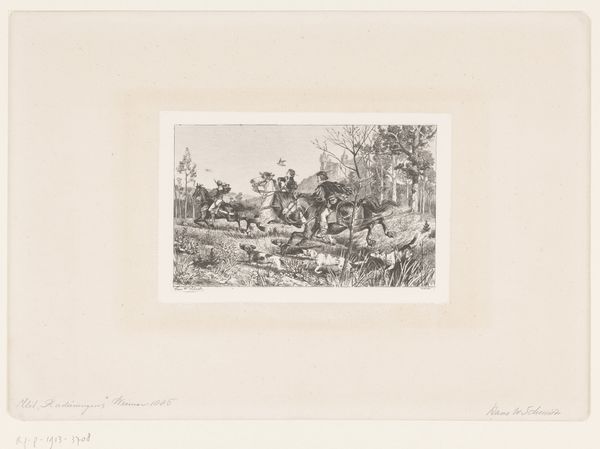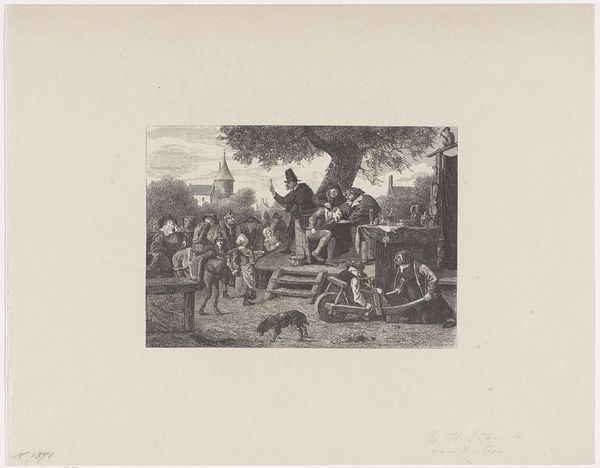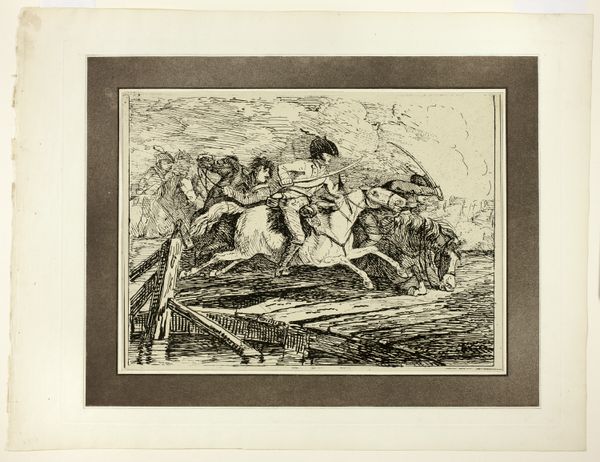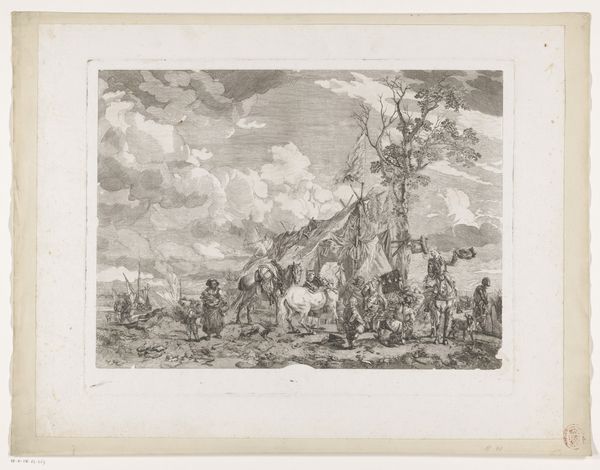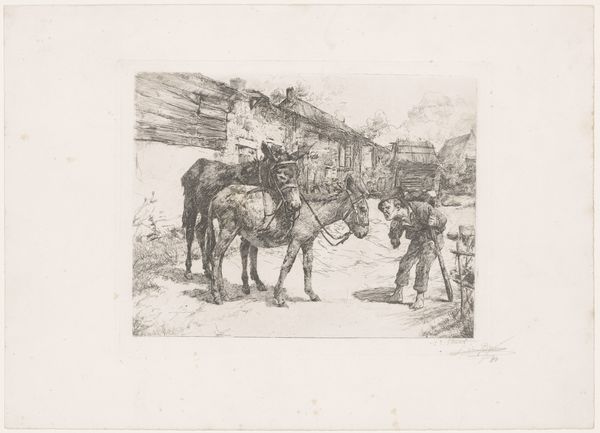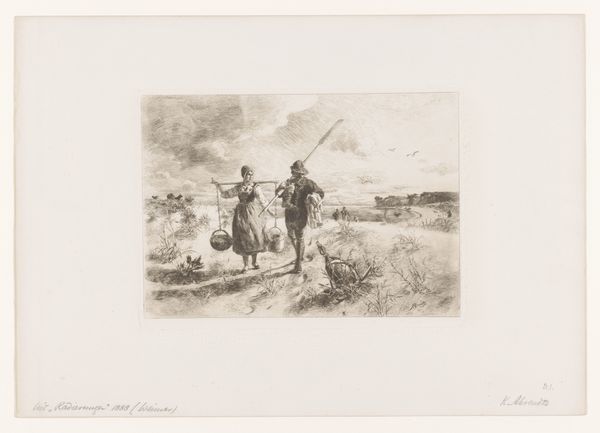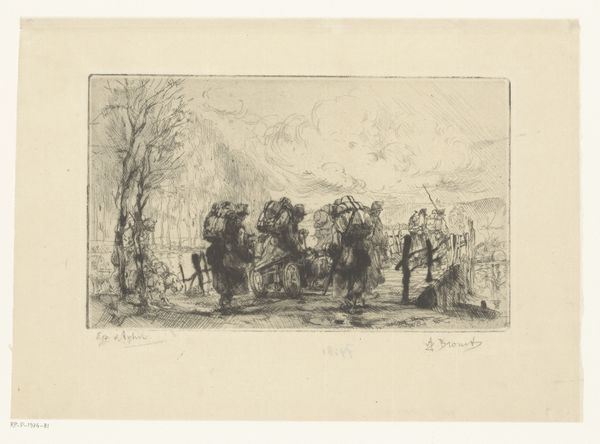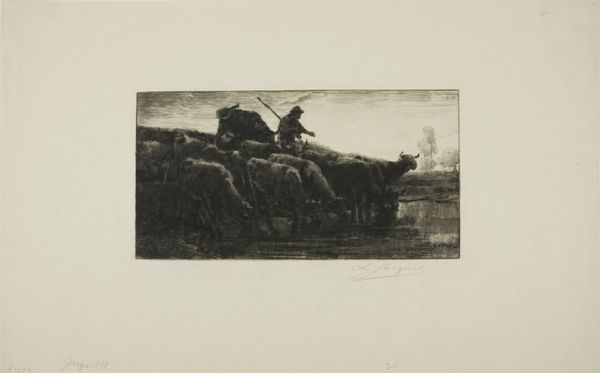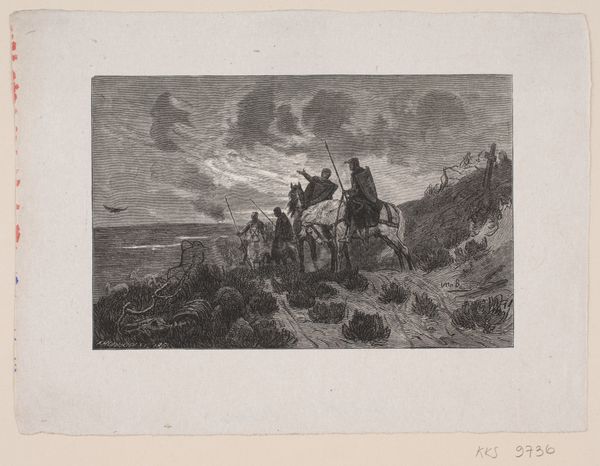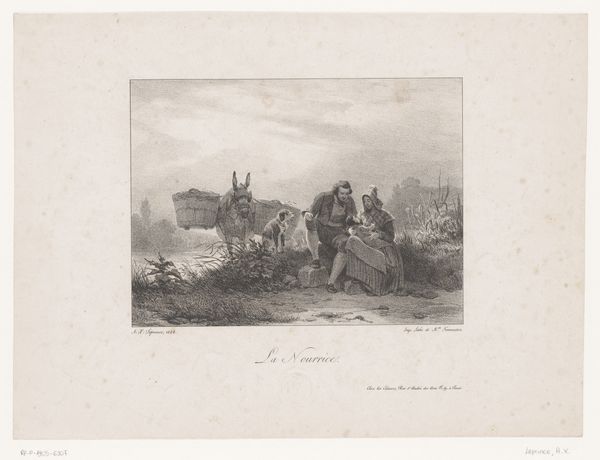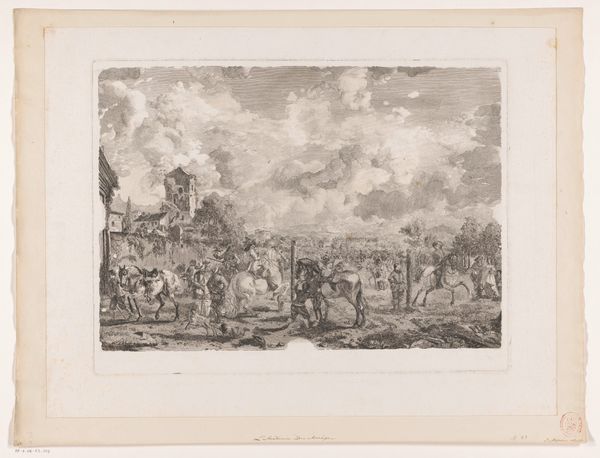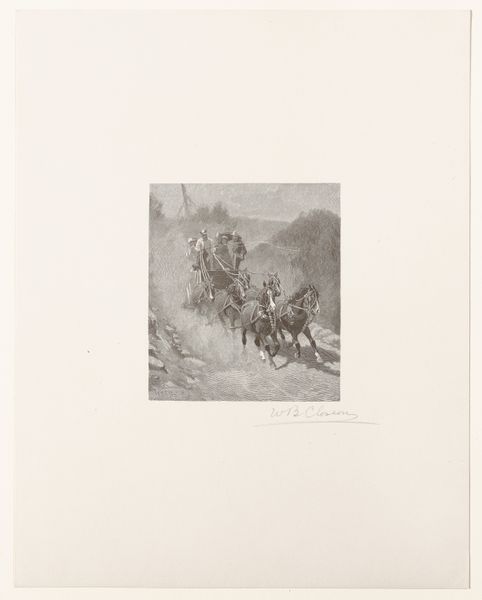
Dimensions: height 206 mm, width 294 mm
Copyright: Rijks Museum: Open Domain
Curator: This is "Rijtuig in de bergen," or "Carriage in the Mountains," an engraving by Hans W. Schmidt from 1888, currently held at the Rijksmuseum. Editor: My initial feeling is one of travel and perhaps constraint. The tightly packed stagecoach winding its way up that road feels quite perilous, almost like a scene frozen in time. Curator: The romantic landscape framing the carriage adds a layer to that perception. Those mountains in the background evoke a sublime sense of awe and possible danger. There’s this whole idea of humans being both drawn to and humbled by nature. Editor: Yes, and the actual craft of the printmaking plays into that. Engraving involves careful labor and deliberate pressure—processes that mirror the stagecoach’s arduous journey. I wonder about the societal value placed on transportation at the time this was made. Who was making such a journey, and what sort of resources were required? Curator: That's an interesting point. Stagecoaches like this one were symbols of connectivity, progress, and societal hierarchy. Look at the figures within the carriage and on horseback. These journeys were expensive. There's even an armed contingent nearby! Editor: Speaking of, I also see the subtle texture of the paper itself as part of the artwork's inherent quality. Schmidt’s method would certainly give an idea of precision labor. He’s showing skill with technique—but this technology was evolving too, right? How accessible was it at the time? Curator: Printmaking allowed for the widespread circulation of images, but skill was valued here. Engravings had an aura and this technique was revered as well as the possibility of replicating at the same time. Schmidt seems to engage the idea of accessibility, while simultaneously representing class differences through his subject matter. Editor: So it's all these competing ideas coexisting. It makes you ponder just how much artistry we impose upon it when considering it today, versus how it may have actually served those living at that time. Curator: It’s fascinating how an image of something functional like a stagecoach becomes imbued with deeper cultural and emotional significance through the artistry, labor, and history surrounding it. Editor: Absolutely. We often consider artwork solely as artistic achievement. It is always fascinating to bring into consideration the processes required for an item like this to come into being. It brings up questions surrounding work and class.
Comments
No comments
Be the first to comment and join the conversation on the ultimate creative platform.
